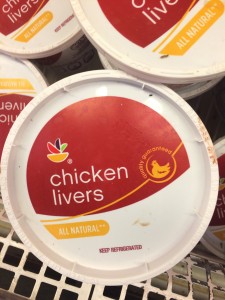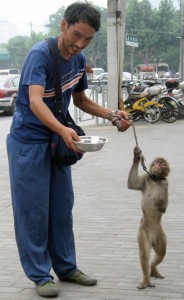https://www.youtube.com/watch?v=eerUnxonS-I
A Man Among Wolves is a documentary made by National Geographic. This video is just a 3 minutes clip from the original 2-hour documentary. It mainly tells the life of Shaun Ellis who chose to live his life among a pack of wolves. The video starts with the narrator saying, “This is Shaun Ellis, he’s done something few would dare and few would understand.” Then Shaun sat in front of the camera and said, “For me, personally, it costs family, home, security, financial commitment, everything is gone.” A great portions of this video is depicting the kind of life Shaun had with wolves: he washes his hair by the river, he roars to the wolves, he howls with the whole pack of wolves, he eats raw meat with wolves and he licks wolves very intimately. The narrator then talks about Shaun’s scientific purposes, which are studying and writing about wolves in Poland and America. He dedicated all his time spending with a pack of wolves and eventually became the “alpha male” in the pack. At the end of the video, the wild life park Shaun and his pack of wolves live in was briefly introduced. There are fences separating the tourists and the animals. One scene that is very worth noting is that as tourists are on the one side of fences observing animals, Shaun is on the other side cuddling with a wolf.
Throughout the whole video, there is a very typical narrative voice of a male as you could hear in any documentary. The background sounds are wolves howling, trees whirling and bird singing. All of these sounds give us a sense of nature, telling us that Shaun and his pack of wolves are living in a truly natural environment.
This amazing video is also relevant to Malamud’s arguments in Zoo Spectatorship. In Malamud’s essay, he is completely against the zoos; he says that spectators disrespect animals in the zoos, and zoos just don’t allow animals to be themselves. In this video, what Shaun does was not just observing wolves at distant. He chose to become one of them in the most natural conditions. He didn’t disturb the original life of wolves at all. Malamud states that, “zoos celebrate people’s power over animals, our penetrating ability to keep them and watch them.” (228). However, Shaun regards himself as one member of the wolf pack. And by doing this, he could appreciate the real beauty of these amazing creatures. So I think Malamud would support Shaun’s way of interacting with the wolves even though it seems extreme to most people.
The purpose of this video is purely educational. As Shaun said himself, “ I wouldn’t be doing this if I don’t think it wouldn’t make a difference.” He successfully showed that man could live in harmony with wolves as long as man respect their way of living.
Sources:
Malamud, Randy. Zoo Spectatorship. New York: New York University Press, 1998. Print.
 t I have chosen is a container of chicken liver. On the lid and side of the container, there is a picture of a hen sitting there. Above the chicken there is text that reads: “ Quality guaranteed”. The text forms a circle around the hen. I cannot tell if the hen is laying eggs or just sitting there. It is not a photograph. It is a realistic drawing. Right next to the hen, it has the name of the product, “chicken livers”.
t I have chosen is a container of chicken liver. On the lid and side of the container, there is a picture of a hen sitting there. Above the chicken there is text that reads: “ Quality guaranteed”. The text forms a circle around the hen. I cannot tell if the hen is laying eggs or just sitting there. It is not a photograph. It is a realistic drawing. Right next to the hen, it has the name of the product, “chicken livers”.

Recent Comments